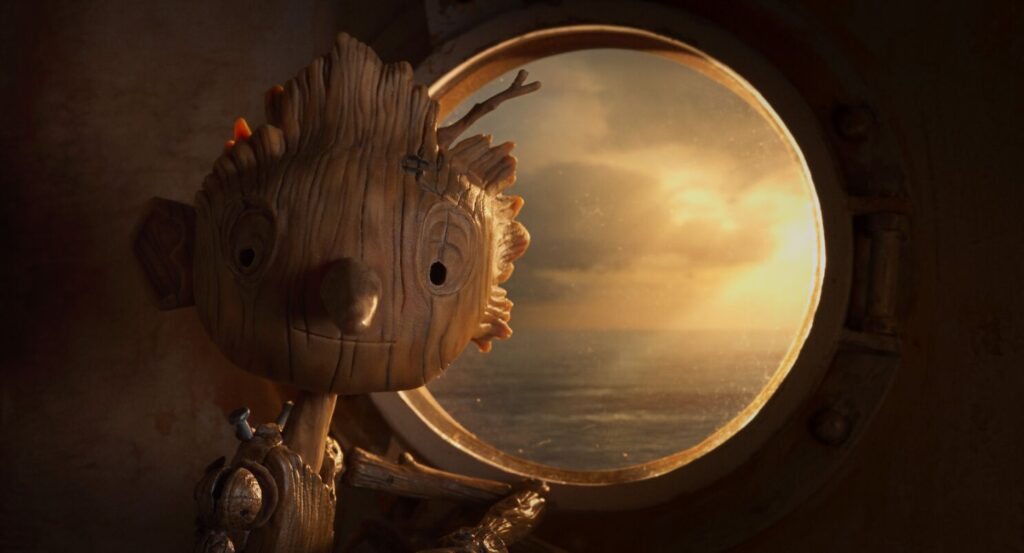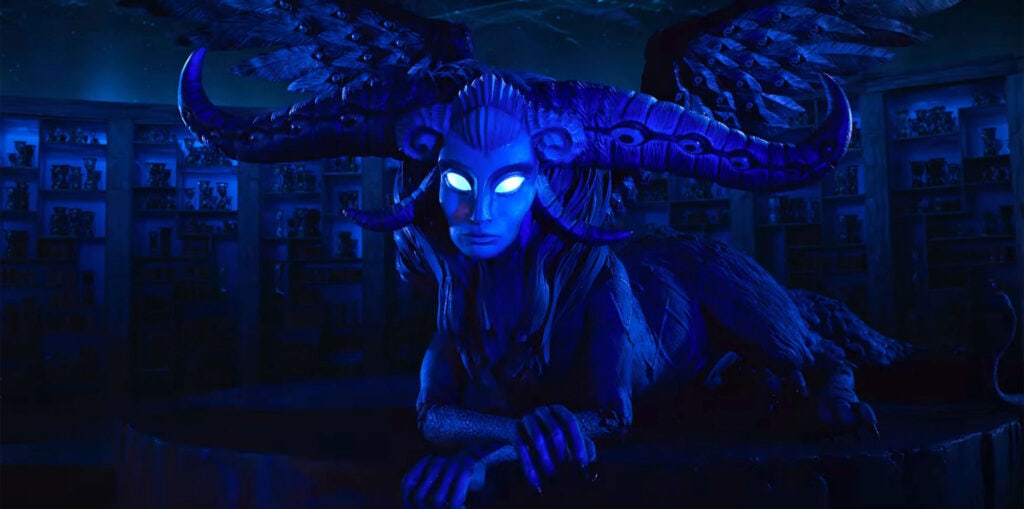With over 60 adaptations since the original story by 19th-century author Carlo Collodi, Guillermo del Toro’s PINOCCHIO is one of the most beautiful interpretations of grappling with grief and acceptance as we see more from the perspective of the puppeteer Geppetto and how by crafting a “real boy” helped to overcome his grief.
Guillermo del Toro’s PINOCCHIO
Director Guillermo del Toro is known for his work to deliver a much deeper than surface-level meaning and his latest, PINOCCHIO, is no exception.
While the story at its surface is an interpretation of the classic Carlo Collodi tale of a wooden boy, this version focuses heavily on the grief as experienced by Geppetto—the puppeteer who lost his son—and acceptance, as the pair struggle to find a place for themselves in 1930s fascist Italy.
Guillermo del Toro’s PINOCCHIO is dark
Grab your tissues but not your kids, because this version will tug at the heartstrings, even with its dark moments. Yes, scary dark moments, more so than any version in recent history, but maybe deservedly so. This version definitely sits aside some of del Toro’s other works such as Pan’s Labyrinth and The Devil’s Backbone.
Guillermo del Toro’s PINOCCHIO delicately balances multiple themes
Guillermo del Toro’s PINOCCHIO centers on five main themes:
- the father-and-son story;
- the death and life and resurrection story;
- the parallels to a Messiah story (Pinocchio dies and resurrects, is made of wood and nails, and comes back to save those he loves);
- the temptation of show business/being famous; and
- war (at the periphery).
The movie does a brilliant job of balancing and weaving these themes while keeping the story moving.
PINOCCHIO centers on themes of fathers and sons—Geppetto and Pinocchio, Volpe and Spazzatura, the fascist officer and his son. Perhaps the most diabolic and monstrous of all is the paternal fascist Mussolini character.
Guillermo del Toro’s PINOCCHIO features heavy themes of fascism
Collodi’s original “Pinocchio” was very political in nature. It served both the need of Italy at the time it was written, but it was also filled with ideas of embracing obedience and listening to your elders during a period when Italy was forming a sense of pride in one’s country as well as a new republic. A totalitarian background is a suitable background for a story that explores disobedience as a virtue.
Guillermo del Toro’s PINOCCHIO has stunning visuals
Stunning stop-motion visuals and catchy musical numbers lead the charge in making del Toro’s PINOCCHIO the hit that it is. The underlying messages of overcoming grief and acceptance help to make it stand out from the iterations of the story that have come before it, but it’s the visuals that really stand out.
About Guillermo del Toro’s PINOCCHIO
Academy Award-winning director Guillermo del Toro and award-winning, stop-motion legend Mark Gustafson reimagine the classic Carlo Collodi tale of the fabled wooden boy with a whimsical tour de force that finds Pinocchio on an enchanted adventure that transcends worlds and reveals the life-giving power of love.
A father’s wish magically brings a wooden boy to life in Italy, giving him a chance to care for the child. However, the two of them have to struggle to find a place for themselves as Italy becomes embroiled in fascism.
Rating: PG
Runtime: 114 minutes
Directors: Guillermo del Toro and Mark Gustafson
Screenplay: Guillermo del Toro and Patrick McHale
Based on the Book “Pinocchio” Written by: Carlo Collodi
Producers: Guillermo del Toro, p.g.a.; Lisa Henson; Gary Ungar, p.g.a.; Alex Bulkley, p.g.a. & Corey Campodonico
Co-Producers: Melanie Coombs, Gris Grimly, Blanca Lista
Songs: Music by Alexandre Desplat; Lyrics by Roeban Katz, Guillermo del Toro, and Patrick McHale
Cast: Gregory Mann, Ewan McGregor, David Bradley, Tilda Swinton, Christoph Waltz, Finn Wolfhard, Cate Blanchett, John Turturro, Ron Perlman, Tim Blake Nelson, Burn Gorman
Premieres December 9, 2022, on Netflix and in select theaters now.
- Is a Micro Wedding the Dream You Didn’t Know You Had? - February 14, 2025
- DIY Valentine’s Day Cards Inspired by Monster High - February 13, 2025
- What Therapy Options Are Out There and What Ones You Haven’t Considered - February 13, 2025











Leave a Reply